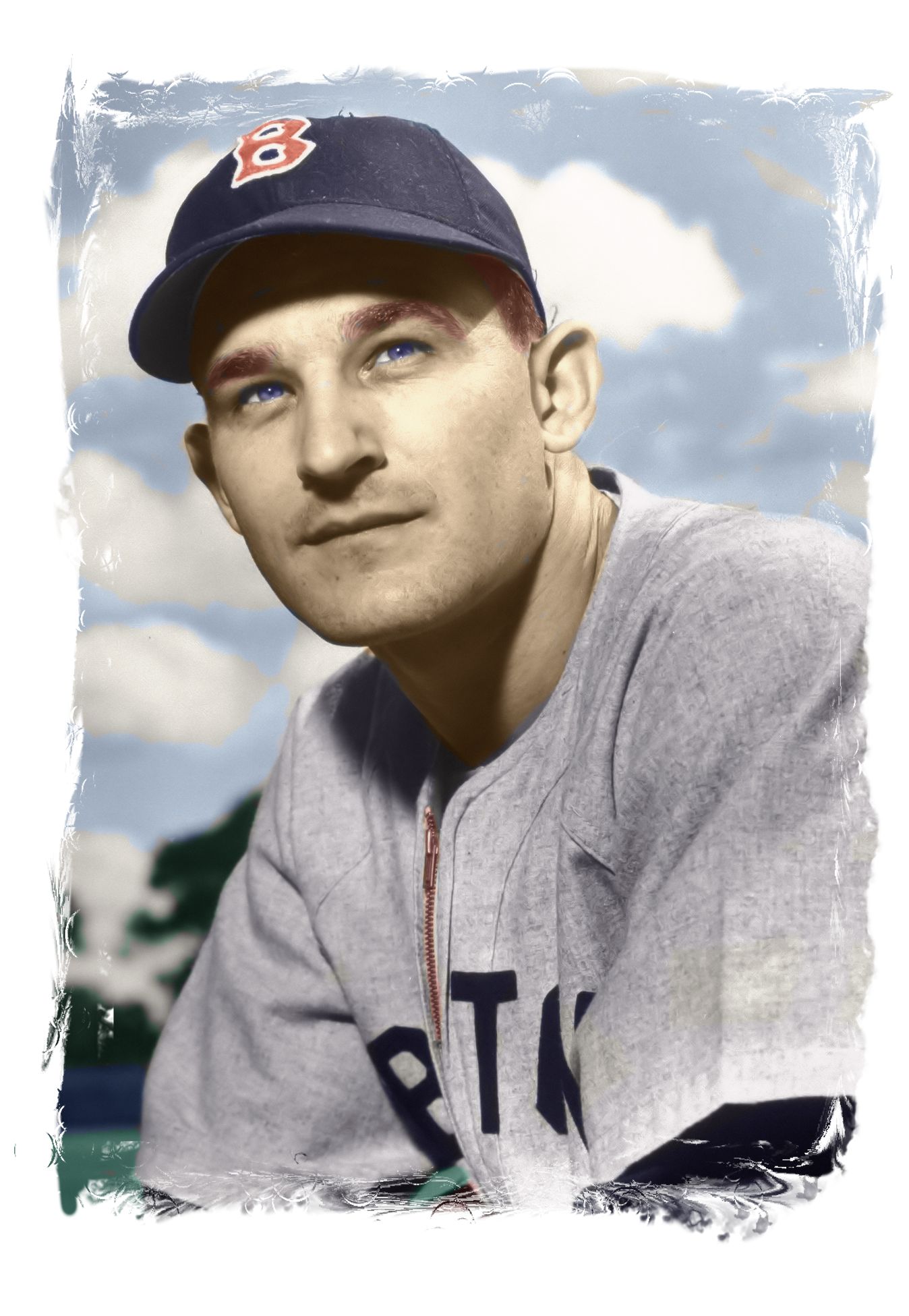 |
Matt Batts was born and raised in San Antonio, Texas on October 16, 1921. From the sandlots, Matt progressed through the city’s schools. The year he started high school, though, the city discontinued its baseball program due to its expense. Unable to play high school ball, he played American Legion ball and in a few other leagues nearby. He was named to the All-State team in Texas for his Legion ball play. He still holds the high school javelin record for the state of Texas. He started catching in semipro ball, pretty much by accident, really the result of a little clowning around. He enrolled at Baylor and played on the freshman baseball team — which was good enough to beat the varsity. He left after about a year and a half because he had signed a major league contract and didn’t tell them about it. He had a deal with the Boston Red Sox that they would pay his way thru school and he could still play football and baseball. He had also been offered a $2,500 bonus and a new car. He signed in 1942 and was sent to Class-C Canton (Ohio) of the Middle Atlantic League. But the country was at war, and ballplayers were no more exempt than anyone else. Matt enlisted in the Army Air Corps at Randolph Field. He became a crew chief, servicing aircraft, mostly trainer planes for the cadets coming through as prospective pilots. His job was to ensure that everything was in shape with the aircraft, ready to go each morning. He served at Randolph Field for the duration of the war, reaching the rank of sergeant. After he was discharged, the Red Sox sent him to nearby Lynn, Massachusetts, to play in the Class-B New England League in 1946. Despite having lost three years to military service, he improved his production hitting .337 and hit 12 homers. In 1947, he was promoted to Scranton in the Single-A Eastern League but appeared in only eight games there. As it happened, the catcher for the Red Sox International League affiliate in Toronto, Gene Desautels, got hurt. The club asked Boston for a replacement and was sent Matt. Late in the season, when Toronto’s season was over, he was summoned to play with the Red Sox. Batts was the backup catcher for Birdie Tebbetts in 1948 and did quite well, hitting .314 in his 118 at-bats. From the time he hit the big leagues, he never played anywhere other than behind the plate. In 1949, Batts got in more games, but didn’t hit as well. In 1950, Matt got even more work, and improved to .273. Then early in 1951, he was traded to the St. Louis Browns in a complicated deal that saw the Red Sox acquire Les Moss, while sending the Browns $100,000, Batts, Jim Suchecki, and a player to be named later, who proved to be Jim McDonald. He had hoped to get more playing time with St. Louis, but was blocked there by Sherm Lollar. He did well, hitting .302 with the Browns in 1951. He was then traded to Detroit and served as backup to Joe Ginsberg in 1952, struggling with a disappointing .237 average and a paltry 13 RBIs. Then Ginsberg was sent to the Indians in an eight-player trade in June 1953, and took over as first-string catcher, boosted his average to .278. He missed a lot of time in 1954, because he came down ill and was diagnosed as having hemorrhaging ulcers. After two days in the hospital, with the Tigers visiting Boston, Batts determined to check himself out. Told he couldn’t leave, he simply absented himself. Batts was traded to the White Sox at the end of May, then traded in early December to Baltimore who in turn sold him to Indianapolis in April 1955, before the season began. Even with Indianapolis, he hit only .231, though he got a shot with the Reds in early July when Hobie Landrith was placed on the DL and Cincinnati purchased his contract. His career pretty much then just petered out. He spent most of 1956 in the Southern Association playing for Nashville (other than three plate appearances for Cincinnati), hitting .258. He split time in 1957 between Birmingham and then back where it all began on the gravel streets of San Antonio. The family later moved to the Louisiana state capital, Baton Rouge and he became friends with the sheriff, who initiated a program for juveniles. He worked in the district attorney’s office, while his wife ran Batts Printing, a business he’d begun with an attorney friend. Business got to be so good that he quit the DA’s office and went in to help her, and they made it into quite a great business. They later sold the business and retired, moving to the Country Club of Louisiana. Jack Nicklaus built the course there, and made a nice subdivision. Matt Batts died at home in Baton Rouge, of natural causes on July 14, 2013. |
|||||
